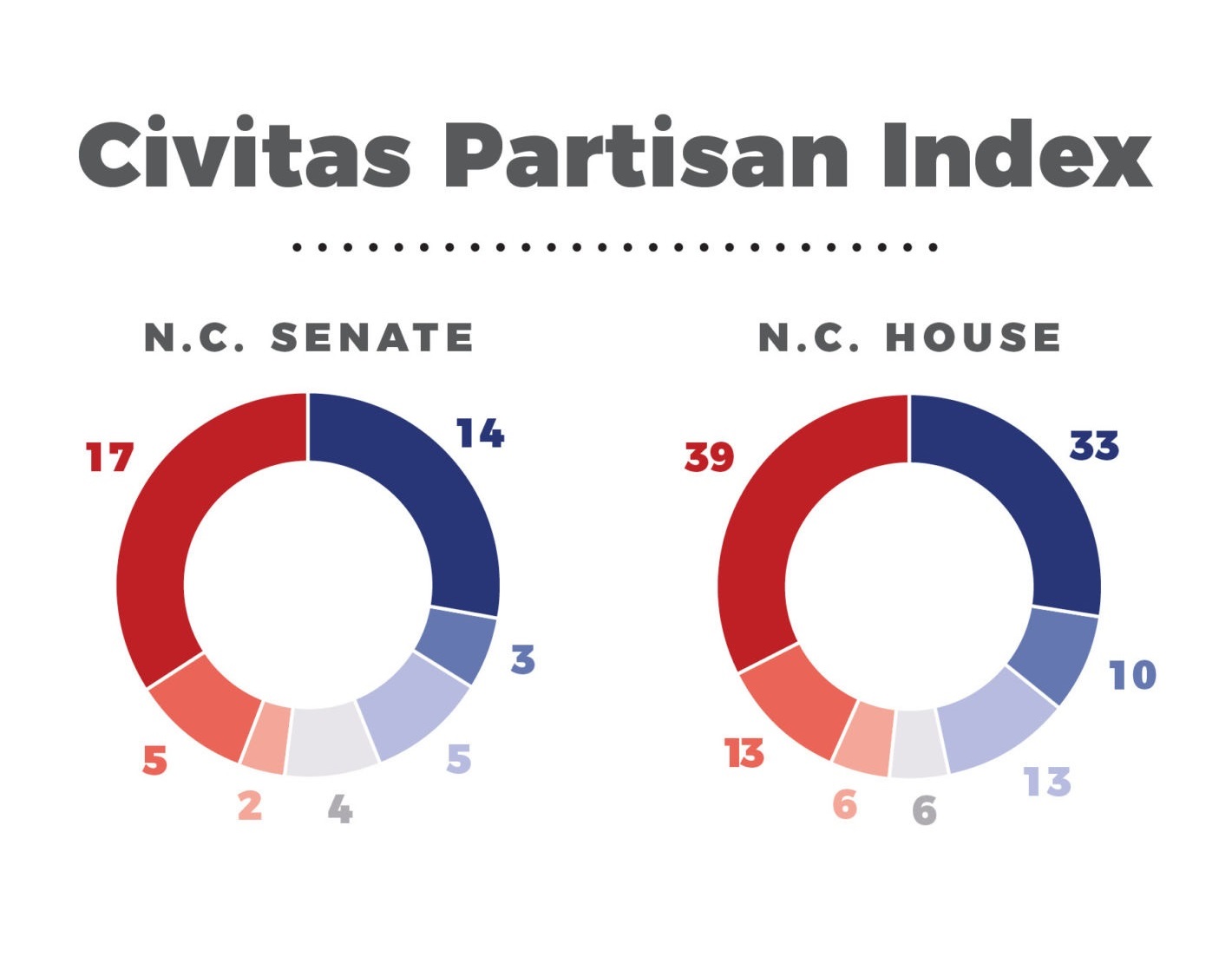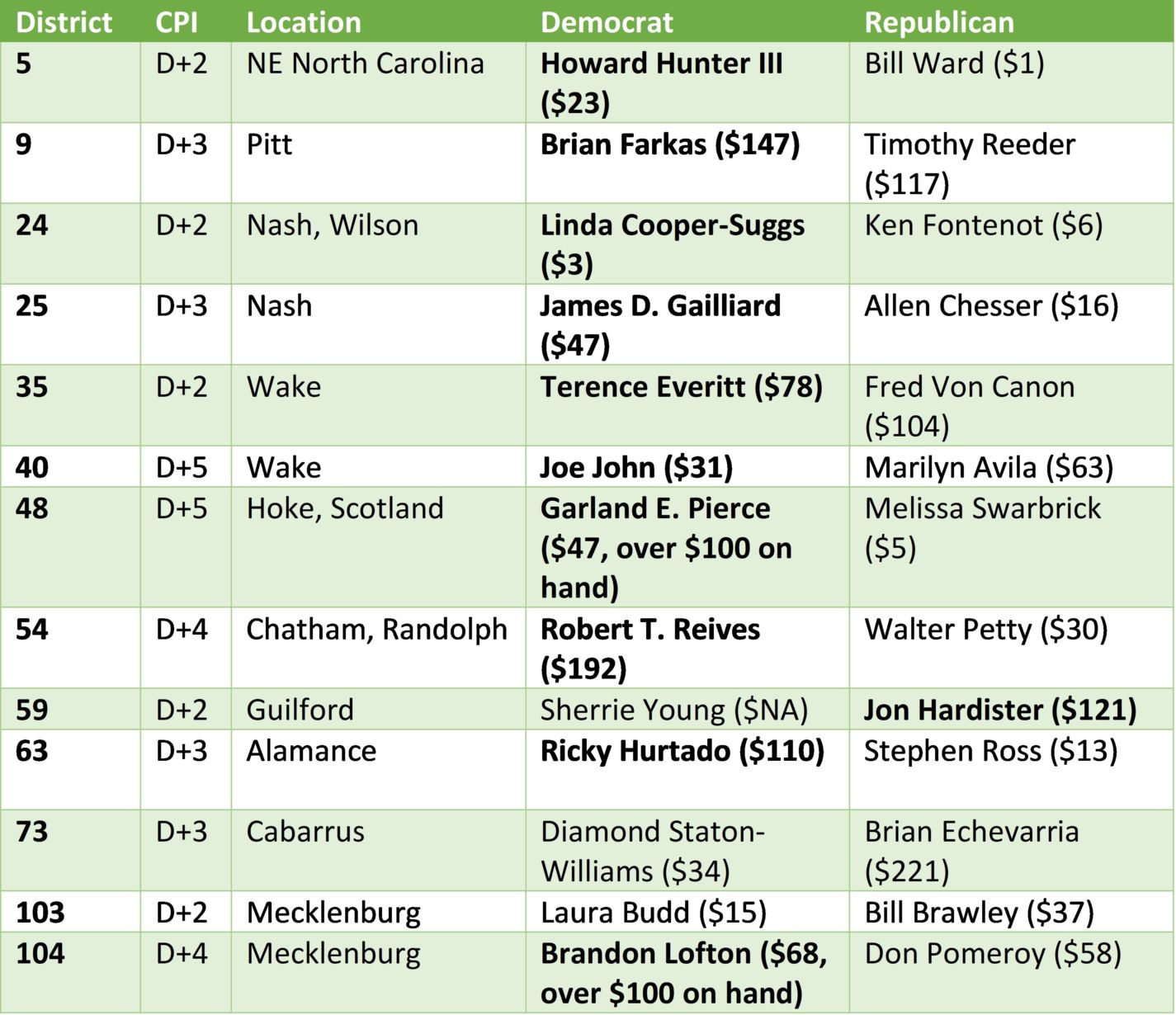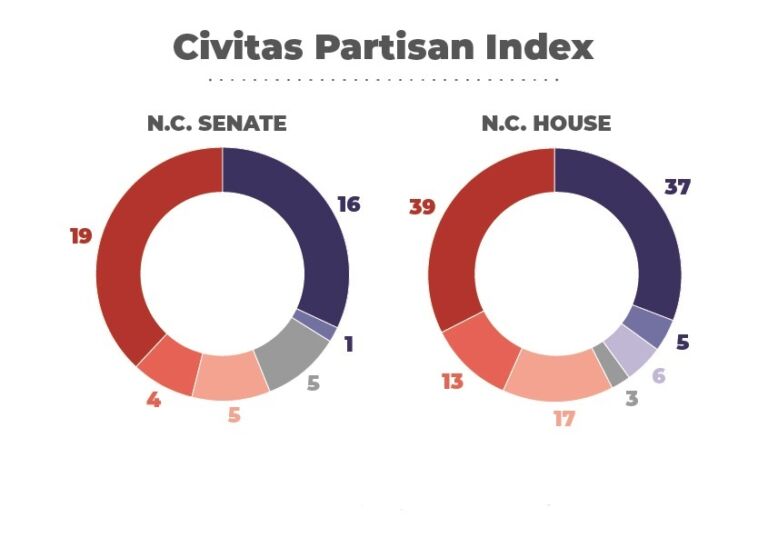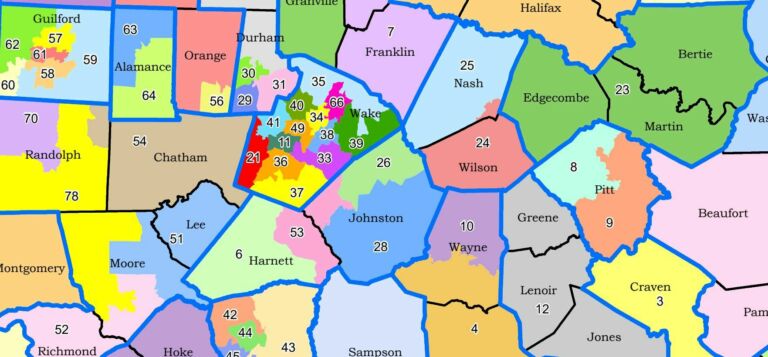With the May 17 primary behind us, all political eyes turn towards November.
One crucial question is whether Republicans will win supermajorities, which would allow them to override Gov. Roy Cooper’s vetoes. Republicans need to win 72 seats in the North Carolina House and 30 in the Senate to gain supermajorities. How likely is that to happen?
The First Element: Baseline Ratings of Districts in the Civitas Partisan Index
The Civitas Partisan Index (CPI) measures the base partisan leanings of a North Carolina state legislative district compared to the state as a whole. While partisan lean is just one part of the puzzle when analyzing who is likely to win in a district, someone using the CPI without any other data would have successfully predicted 90 percent of state legislative races in 2018 and over 94 percent of races in 2020. Click here to see the methodology behind the CPI.
So, how does the CPI rate General Assembly districts this year? As seen in the figure below, the CPI rates 24 Senate Districts as either lean (2-5 percent advantage), likely (6-9 percent), or safe (10+ percent) Republican. Twenty-two are lean, likely, or safe Democratic. That leaves four toss-up seats where neither party has a baseline advantage.

In the House, Republicans have a baseline advantage in 58 districts, compared to 56 districts with a Democratic baseline advantage and six toss-up seats.
Below are district maps for the North Carolina Senate and House. Information for each district includes the CPI rating, the Republican candidate, and the Democratic candidate. Some districts only have one major-party candidate. Below the maps are Excel files for the Senate and House.
(And, yes, we plan to include Libertarian candidates when we publish an updated version of this post in the weeks before the general election.)
The Second Element: A Coming Red Wave?
CPI is a baseline indicator, not a predictive model. It does not include other factors that affect election outcomes, such as incumbency, candidate quality, opponent quality, campaign money, or the political environment.
While most of those factors vary from district to district, the political environment often affects districts all over the state in so-called “wave elections.” The president’s party usually suffers losses in such waves in midterm elections.
Polling suggests that this November will be especially hard on Democrats. An April 14-18 survey of 600 likely general election voters in North Carolina found that 51% plan to vote for a Republican candidate for the North Carolina legislature, with 41% saying they plan to vote for a Democrat. Even if Democrats can manage to cut that disadvantage in half by election day, they would still lose seats where they would typically have an advantage.
Potential Democratic candidates saw this red wave coming months ago, resulting in no Democratic candidates in 41 of the state’s 170 House and Senate districts. Republicans failed to recruit candidates in only ten districts.
The Districts to Watch in November
With that in mind, the races to watch in the November general election are not in the CPI “toss-up” districts, which Republicans will likely sweep. The “lean Democratic.” seats are the ones to watch.
Assuming that Republicans win all the toss-up districts, they will also have to win two of the five lean Democratic districts in the table below to win a supermajority in the Senate (with incumbents in bold and first-quarter fundraising, in thousands, in parentheses) :

The House will be a tougher nut for the Republicans to crack. Assuming again that they win all the toss-up districts, they will have to also win eight of the thirteen lean Democratic districts in the table below to win a supermajority (again, with incumbents in bold and first-quarter fundraising, in thousands, in parentheses):

A word of warning: while the districts listed above are likely to be the most competitive races in November, we are certainly in for a few surprises. In 2018, Republicans won in three districts that favored Democrats in an otherwise good year for Democrats. For their part, Democrats picked up one “likely Republican” district.
While candidates and parties will be struggling across North Carolina, the 18 districts noted here will likely be the key to deciding the balance of power in Raleigh.


